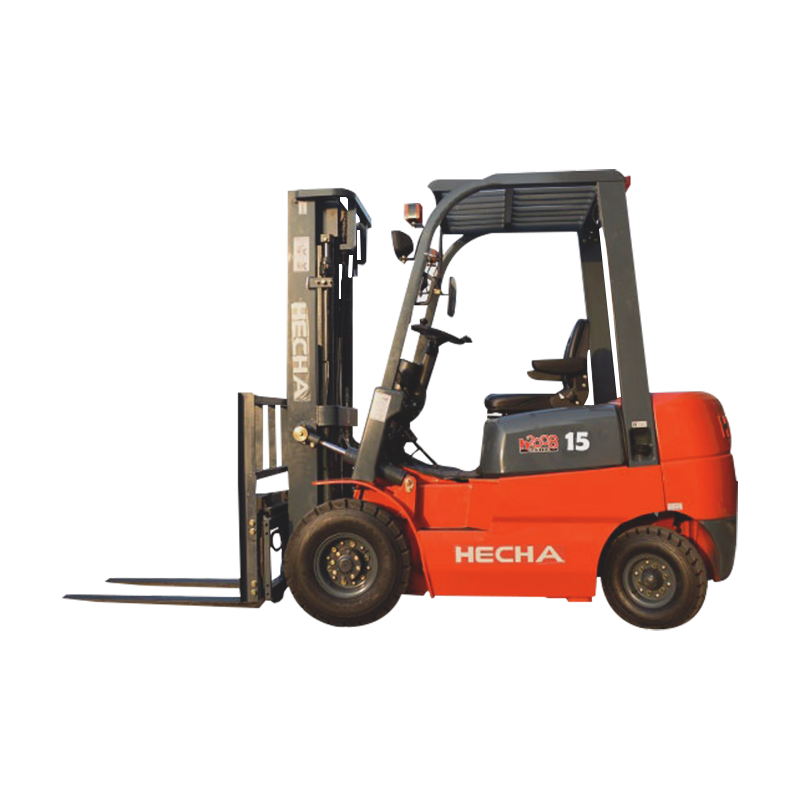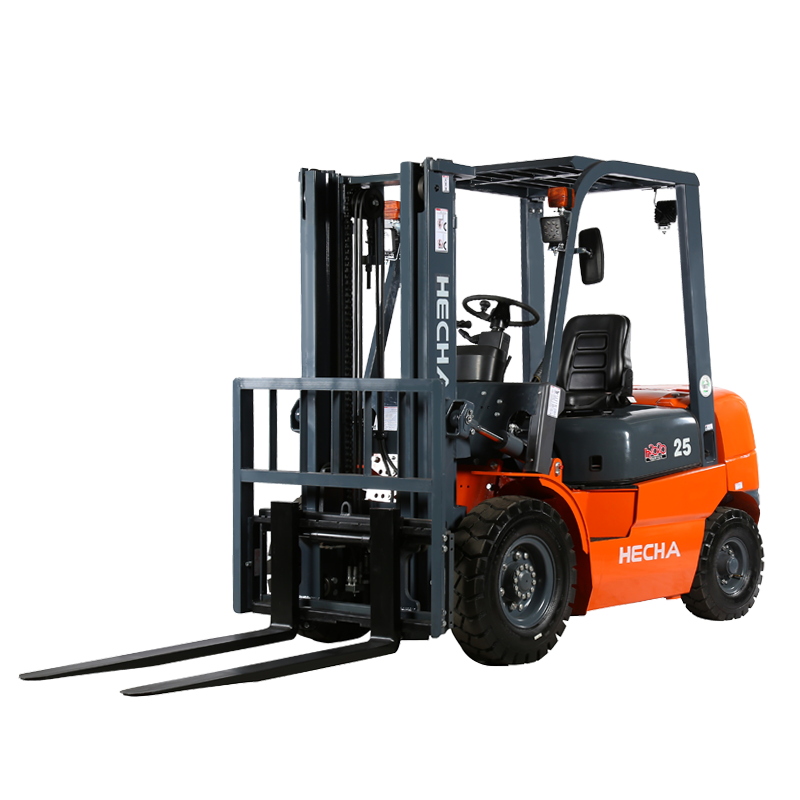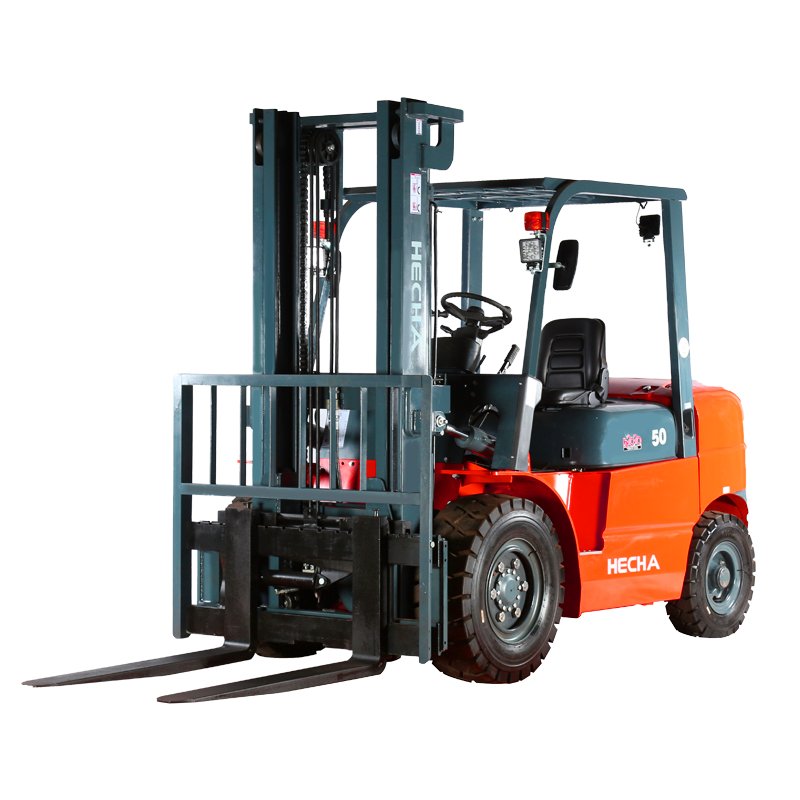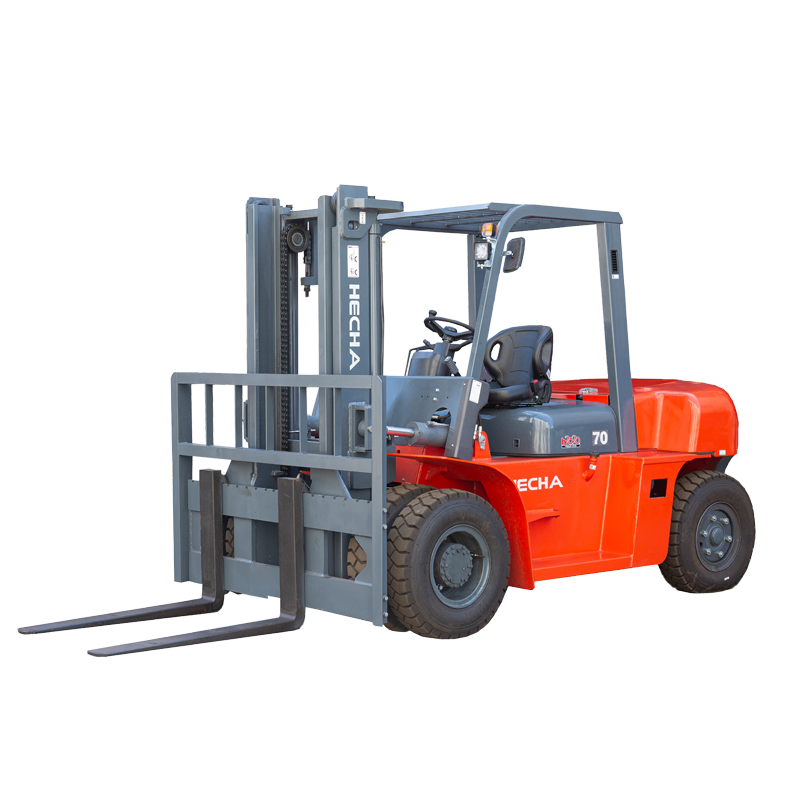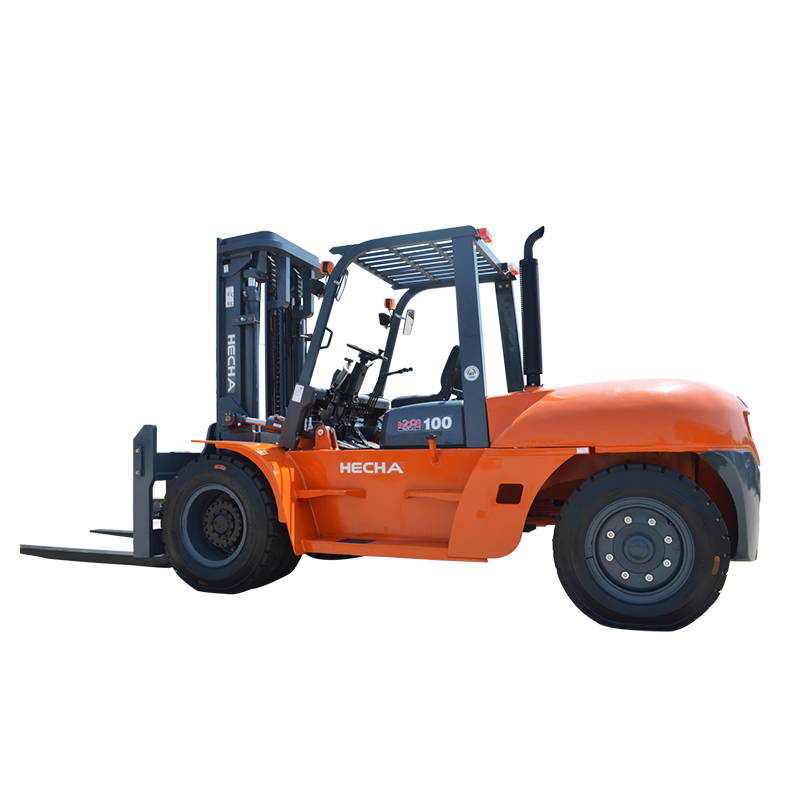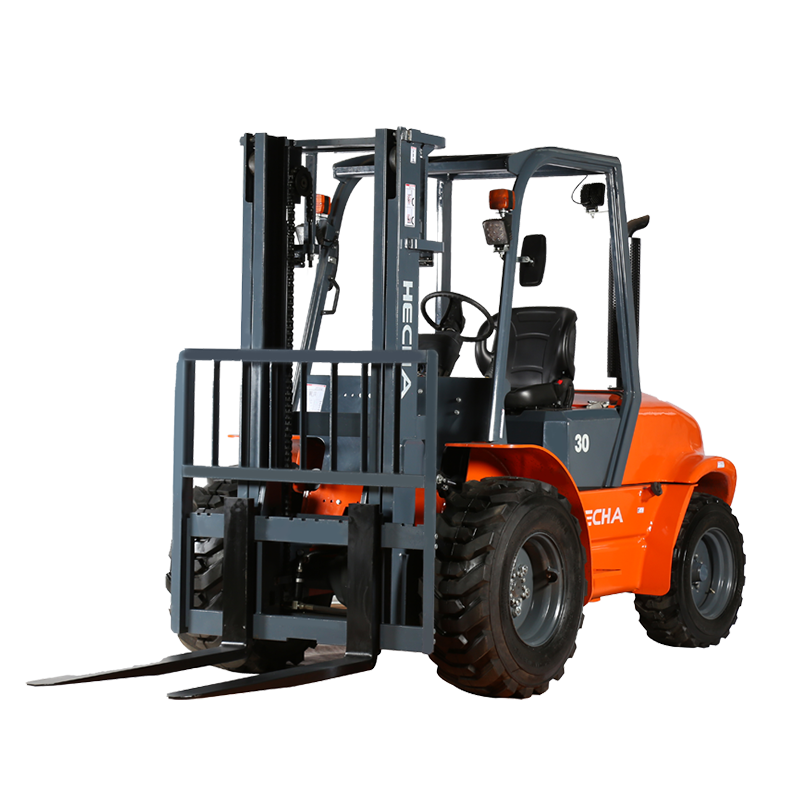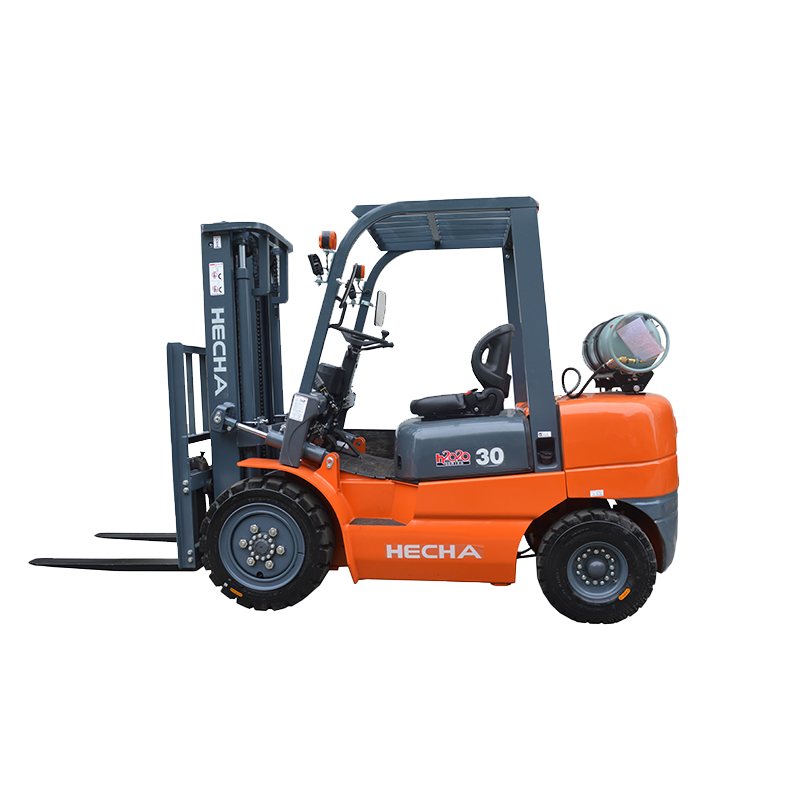In the field of industrial logistics, 8-10 ton diesel forklifts need to frequently perform cargo lifting, handling and stacking tasks, and their operating scenes are often accompanied by complex conditions such as narrow passages and dense obstacles. Collision accidents caused by blind spots in traditional forklifts account for more than 30% of the operating risks, and under high-load conditions, problems such as cargo blocking the line of sight and large steering inertia further aggravate the safety challenges. Therefore, field of vision optimization has become the core breakthrough point in the safety design of such forklifts.
The curvature design of the wide-angle rearview mirror needs to take into account both the field of vision and visual distortion control. The field of vision of traditional flat mirrors is limited (about 120°), while the curved mirrors used in 8-10 ton forklifts optimize the curvature radius to specific parameters through precise calculations, so that the field of vision is expanded to more than 180°. This design needs to balance two points:
Expanded field of vision: The curved mirror incorporates the side and rear blind spots into the driver's field of vision through the refraction principle of reflected light, especially when reversing or turning, obstacles or pedestrians can be discovered in advance.
Distortion control: Excessive curvature will cause image distortion and affect the driver's judgment of distance. Modern forklifts use aspherical mirror design to control the distortion rate within 5% to ensure the accuracy of visual information.
For example, a certain brand of forklift uses gradient curvature technology on a mirror with a curvature radius of 800mm, which increases the clarity of vision in the near-field area (such as the sides of the fork) by 40%, and expands the coverage of the far-field area (such as the rear channel) by 30%.
The reversing image system equipped with high-end forklifts transmits the rear image to the cab display screen in real time through the rear camera. Its technical advantages are reflected in:
High-resolution imaging: Using a 1080P camera, it can still provide clear images even in low-light environments (such as night operations).
Dynamic auxiliary lines: The system superimposes dynamic guide lines in the picture according to the steering angle of the steering wheel to help the driver predict the driving trajectory.
Obstacle recognition: Some models are integrated with ultrasonic sensors. When the distance to the rear obstacle is detected to be less than the safety threshold, an audible and visual alarm is triggered.
This technology reduces the driver's operational error by 60% when reversing, and is particularly suitable for fine-tuning operations in narrow passages or stacking operations.
Optimizing vision not only improves safety, but also significantly improves operating efficiency by reducing operational pauses and blind spot misjudgments.
When reversing a traditional forklift, the driver needs to frequently turn his head to observe the rear, resulting in an interruption in the operating rhythm. The combination of a wide-angle rearview mirror and a reversing image system allows the driver to maintain a straight line of sight in front and only needs to briefly glance at the side rear or the display screen to complete the reversing action. For example, in port container yard operations, forklifts equipped with a vision optimization system can shorten the single reversing time by 20% and increase cargo turnover efficiency by 15%.
8-10 ton forklifts have a long body, high load, and large inertia when turning, which makes them prone to rollover or collision. The wide-angle rearview mirror allows the driver to observe obstacles within the turning radius in advance, and with the dynamic auxiliary lines of the reversing image system, the steering angle can be controlled more accurately. Experimental data shows that the error rate of forklifts with optimized vision is reduced by 45% when turning 90°, which is especially suitable for narrow spaces such as warehouse aisles or construction sites.
The vision optimization needs to match the driver's operating habits and physiological characteristics, and its design logic is reflected in:
The installation height and angle of the rearview mirror in the cab must be ergonomically verified. For example, a certain brand of forklift expands the adjustment range of the rearview mirror to ±15° by simulating the line of sight of drivers of different heights, so that 95% of drivers can quickly find the best observation position.
The display screen of the reversing image system must avoid direct sunlight or reflection interference. Some forklifts use anti-glare screens and support automatic brightness adjustment to ensure clear display in strong or weak light environments.
The vision optimization system needs to be linked with other safety functions of the forklift (such as power braking and anti-rollover system). For example, when the reversing image system detects an obstacle, it can automatically trigger power braking to avoid collision.
With the development of Industry 4.0 and intelligent technology, the field of vision optimization of 8-10 ton diesel forklifts will show the following trends:
Through multi-camera fusion technology, 360° blind spot coverage around the vehicle body is achieved. The driver can select any viewing angle through the touch screen to further improve the flexibility of operation.
Superimpose virtual paths and cargo information in the field of vision, so that the driver does not need to be distracted by checking paper documents or electronic terminals during the handling process.
Combined with laser radar and AI algorithms, the forklift can autonomously identify the type of obstacles (such as pedestrians, vehicles, and cargo) and adjust the driving strategy according to the risk level.
The field of vision optimization technology of 8-10 ton diesel forklifts embodies the three principles of industrial equipment safety design:
Prevention first: discover risks in advance through technical means, rather than relying on the driver's emergency response.
Human-machine collaboration: combine the perception ability of the machine with the decision-making ability of people to achieve a dynamic balance of "man-machine-environment ".
Continuous iteration: Safety design needs to keep up with technological development and user needs, and continuously optimize the detail experience.

 English
English 中文简体
中文简体 русский
русский Français
Français Español
Español

